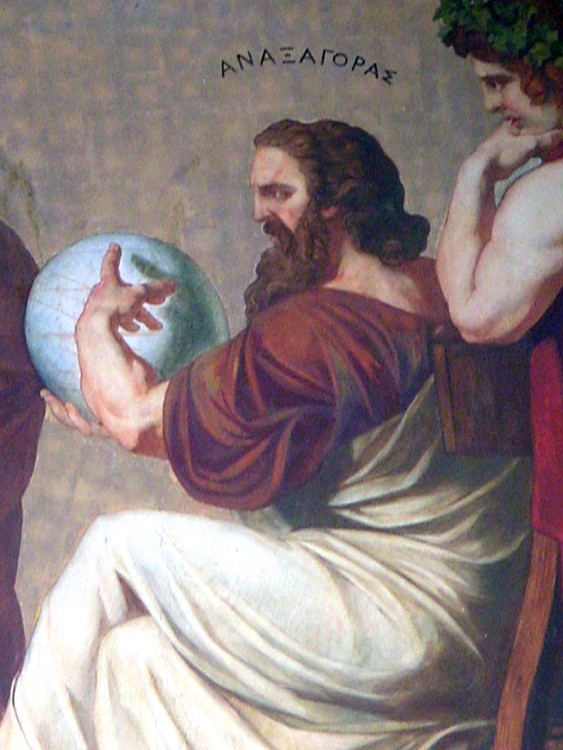
Anaxagoras (c. 500-428 BC) was a Presocratic philosopher from Clazomenae on the coast of Asia Minor (modern Turkey). He came to Athens to practise philosophy in around 480 BC – although most of the details of his biography are uncertain – but was banished around 20-30 years later for impiety. He reportedly claimed that the sun, moon and stars were not gods, as was traditionally believed, but made of natural substances (metal, earth or fiery stones). He seems to have spent the rest of his life in Lampsacus, back in Asia Minor.
According to an apocryphal story related by the biographer Diogenes Laertius, Anaxagoras predicted the fall of a meteorite in 467 BC. He probably speculated on many topics now considered part of ‘science’, including astronomy, meteorology and physiology, and seems to have thought that the universe was made up of a mixture of elements that were set in motion by Mind (nous).
The above image is from a fresco by Eduard Lebiedzki, after a design by Carl Rahl (1888), in the portico of the University of Athens.








Your email address will not be published. Comments are subject to our Community Guidelines. Required fields are marked *
Donate